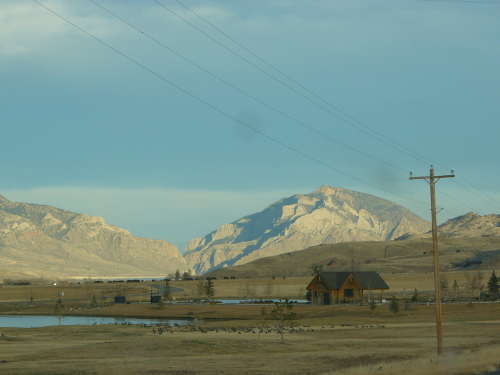 Location Taken: Buffalo Bill State Park, Wyoming
Location Taken: Buffalo Bill State Park, Wyoming
Time Taken: October 2012
Did you hear?
There was a major landslide at an utterly massive open pit copper mine in Utah. It’s so big that some articles are calling it “The Largest Landslide EVER”.
Except, well, it’s not. It IS the largest non-volcanic landslide in North America in historic times, but it’s by no means the largest. The eruption of Mount St. Helens triggered a landslide that was far larger, and that was a recent, relatively minor, eruption.
The largest landslide ever found on land was in North America, too. (The largest landslide ever was an underwater one off the coast of Norway, in case you’re wondering). It’s known as the Heart Mountain Landslide, after a lone peak in Wyoming, located just on the other side of the mountain range in my photo. Well, other side isn’t the most accurate term, since Heart Mountain is 10 miles away.
Except…
This was a landslide so massive that there’s a pretty good chance that these mountains were part of it too, if only as a obstacle. The landslide wasn’t down the flanks of Heart Mountain. It INCLUDED Heart Mountain. There was a large sheet of limestone that broke off of the Beartooth mountains, and when I say large I mean 400 square miles. And it slide a rock the size of a mountain some thirty or so miles. What’s more, it did it in half an hour. On land that looks largely flat.
The best guess for why this landslide was both so massive and so fast is a quirk of chemistry. The rock on the bottom of the slide was made of calcium-carbonate, which releases carbon dioxide gas when heated. Guess what the friction involved in moving a rock 400 square miles does? It seems that the landslide actually produced enough gas to literally float the rock over the ground. There’s a layer of rock structures usually only found in volcanic features at the bottom of Heart Mountain.
So if anyone ever scoffs at the power of nature, you can tell them that there was a time when a mountain moved at 100 miles per hour.
